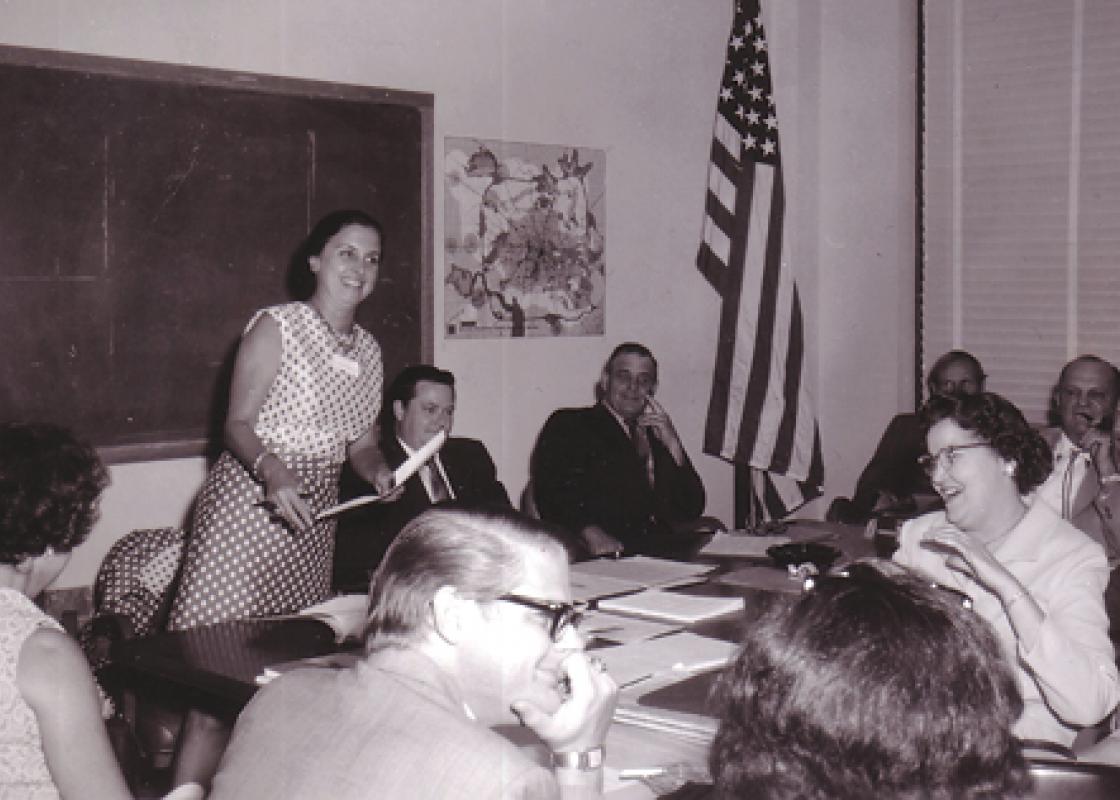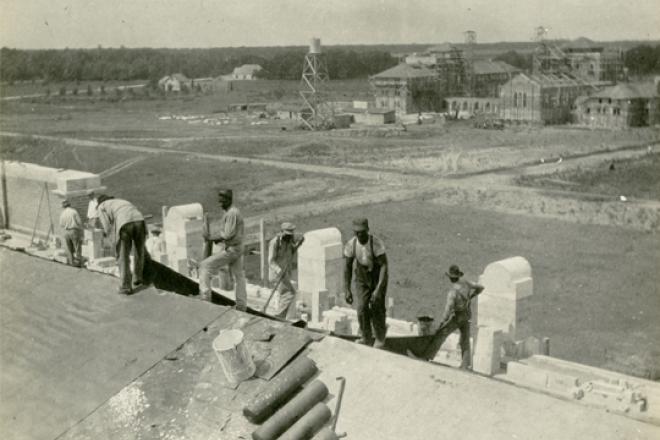“It is hard to be a female figurehead at 8:30 in the morning.”
These were among Terry Hershey's opening words at a 1970 meeting of the Soil Conservation Society of America (now the Soil and Water Conservation Society) in Waco, Texas. A year prior, she had earned a permanent place in Houston history. At the invitation of newly elected congressperson George H.W. Bush, Hershey successfully petitioned Congress to prevent the Army Corps of Engineers from transforming the meandering, Cottonwood- and Black Willow-lined banks of Buffalo Bayou west of Shepherd Drive into a concrete drainage ditch. That win, following an almost 20-year fight, is arguably the defining moment for Houston’s environmental movement.
Stories like Hershey's were among many told by an exhibit at University of Houston's M.D. Anderson Library, “Houston's Environmental Past,” curated by University of Houston students Jessie Doby, Mahduri Keshavarao, Trinh Nguyen, and Tai Luong, and Teresa Tomkins-Walsh, the Houston History Archive Director at the Center for Public History at the University of Houston. The exhibit traced the work of local activists who continue to assert there is something to the city's more than 2,500 miles of waterways and natural expanses that is worth preserving.
Probably the first surprise to exhibit visitors was that an “environmental past” is something Houston has. In the rhetoric of old photographs, maps, pamphlets and campaign materials culled from the library's expansive local archives, the exhibit argued there have been a cadre of environmentally minded citizens challenging the might of private development interests, and largely by way of collective effort. It (re)introduced us to the organizational work of citizens like Joseph Heiser (dubbed Houston's John Muir) who founded the Outdoor Nature Club in the early 20th century to “unite friends and nature lovers.” And Sarah Emmott who formed Texas Beaches Unlimited when the Gulf Coast's public beaches were threatened by privatization. And Hana Ginzbarg, a colleague and close friend of Hershey's, who initiated the “Save Armand Bayou” campaign and, with Hershey, formed the Bayou Preservation Association. Billboards Limited, the Park People, and Houston Bicycle Club also make an appearance.
If the explicit argument of the exhibit was that Houston's environmental history is defined by collective action, the implicit one was that that the face (and biceps) of these efforts belong largely to women. Among the speeches, letters, and meeting minutes preserved in the library's special collection of Hershey's papers is a series of letters between Ginzbarg and Hershey. In one, Ginzbarg writes:
“You are Mrs. Bayou Preservation (among other things) and I am Mrs. Armand Bayou. Without either of us, nothing happens, no money is raised and there is no project.”
Hershey, who sometimes referred to herself as a “philosopher housewife,” also told the SCSA that women, “in their role as non-breadwinners,” had more freedom to speak up about public issues because “no man really holds against another man what the little wife pontificates.” Though tongue-in-cheek, her statement does reveal a reality women involved in the women's liberation movement --- and Houston's environmental activism --- would have understood.
The collection of materials on display was expansive, but the exhibit itself filled only a few display cases on a back wall of the library, near the elevators. Standing alone before these artifacts as students and faculty whizzed by in search of a vacant computer or the key to a study room could have made one feel a bit conspicuous. The experience, for me, was not unlike the way I feel when I walk the Brays Bayou path around the corner from my house. This has become my respite from Houston's noisy freeways and rising highrises, where I inevitably encounter an egret or blue heron, pelicans just in from the bay, wildflowers, and, because it's Houston, a shopping cart or two. I've taken to walking the path almost daily. And, of late, have felt grateful to Hershey and others like her for it. The exhibit was like this path in that in stumbling upon it I can't help feeling like I've discovered a secret --- something important. Something great. But also something that, considering what surrounds it, shouldn't be there. I am glad that it is.
“Houston’s Environmental Past” was on view from March to September 2013. For more information, read the online version of the Spring 2013 issue of Houston History magazine.
By Sara Cooper
More >>>
Read articles from Cite 93, focusing on environmental issues.










